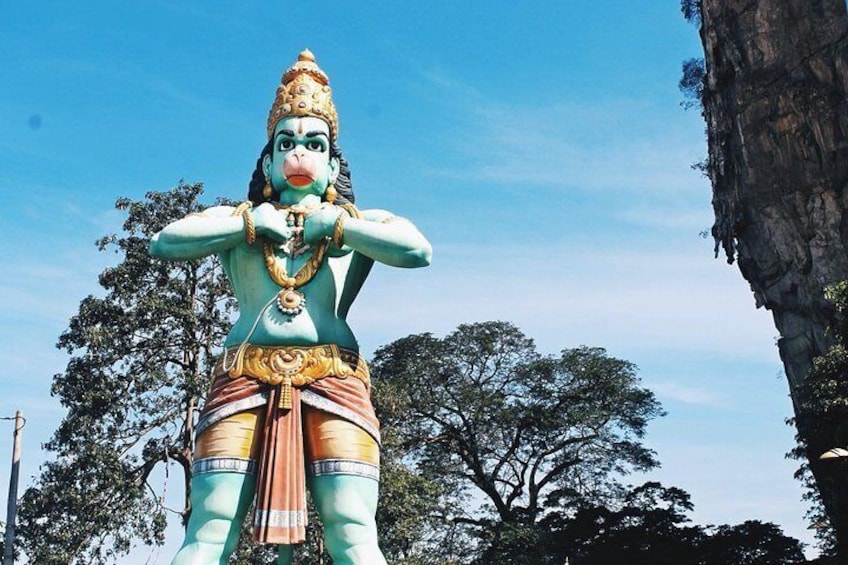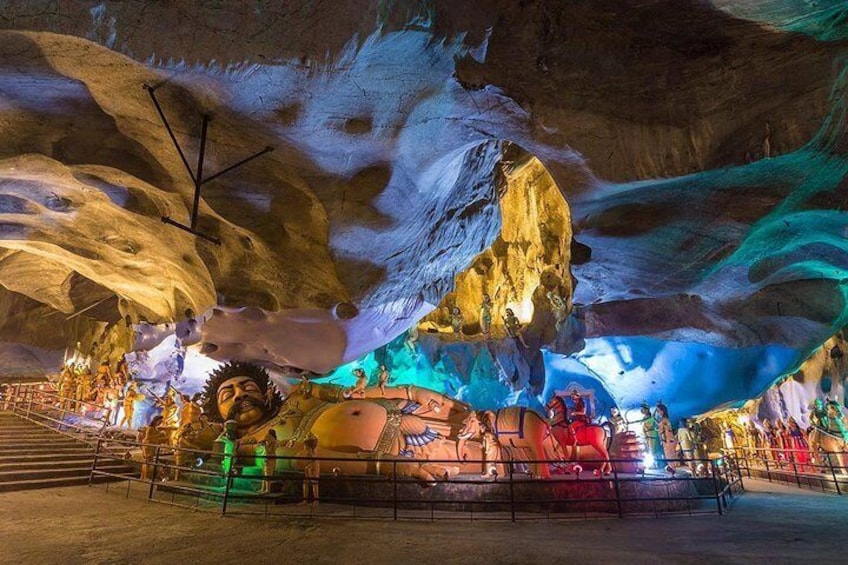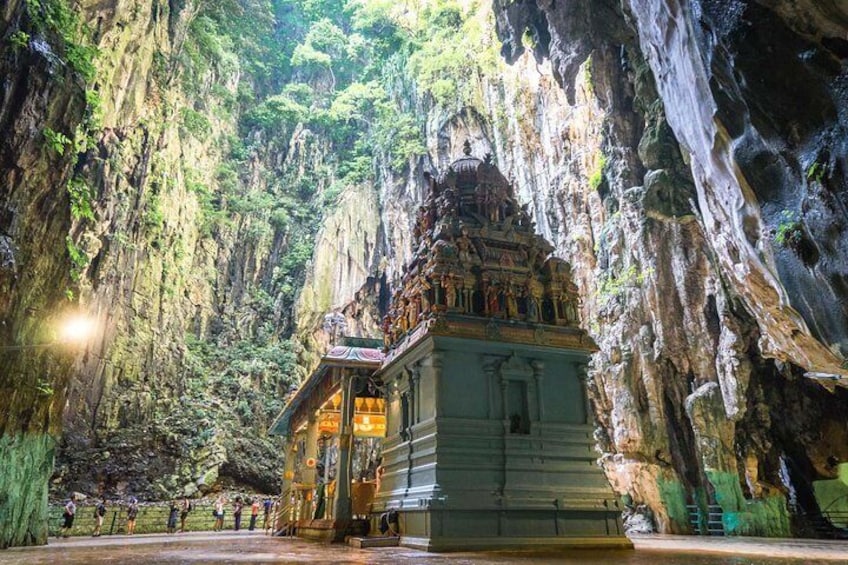Batu Caves
HISTORY: The limestone forming Batu Caves is said to be around 400 million years old. Some of the cave entrances were used as shelters by the indigenous Temuan people (a tribe of Orang Asli).
As early as 1860, Chinese settlers began excavating guano for fertilising their vegetable patches. However, they became famous only after the limestone hills were recorded by colonial authorities including Daly and Syers as well as American Naturalist, William Hornaday in 1878.
Batu Caves was promoted as a place of worship by K. Thamboosamy Pillai, an Indian trader. He was inspired by the vel-shaped entrance of the main cave and was inspired to dedicate a temple to Lord Murugan within the caves. In 1890, Pillai, who also founded the Sri Mahamariamman Temple, Kuala Lumpur, installed the murti (consecrated statue) of Sri Murugan Swami in what is today known as the Temple Cave. Since 1892, the Thaipusam festival in the Tamil month of Thai has been celebrated there.
Wooden steps up to the Temple Cave were built in 1920 and have since been replaced by 272 concrete steps. Of the various cave temples that comprise the site, the largest and best known is the Temple Cave, so named because it houses several Hindu shrines beneath its high vaulted ceiling.
In August 2018 the 272 steps were painted in an extraordinary colour scheme, with each set of steps painted in a different range of colours. However, accusations were almost immediately made by the National Heritage Department for a breach of law requiring authorisation for renovations within 200 metres of a heritage site. The temple's management disputed their failure to receive authorisation.
Rising almost 100 m above the ground, the Batu Caves temple complex consists of three main caves and a few smaller ones. The biggest, referred to as Cathedral Cave or Temple Cave, has a very high ceiling and features ornate Hindu shrines. To reach it, visitors must climb a steep flight of 272 steps.
At the base of the hill are two more cave temples, Art Gallery Cave and Museum Cave, both of which are full of Hindu statues and paintings. This complex was renovated and opened as the Cave Villa in 2008. Many of the shrines relate the storey of Lord Murugan's victory over the demon Soorapadman.
The Ramayana Cave is situated to the extreme left as one faces the sheer wall of the hill. On the way to the Ramayana Cave, there is a 15 m (50 ft) tall statue of Hanuman and a temple dedicated to Lord Hanuman, devotee and aide of Lord Rama. The consecration ceremony of the temple was held in November 2001.
The Ramayana Cave depicts the storey of Rama in a chronicle manner along the irregular walls of the cave.
A 42.7-metre (140 ft) high statue of Lord Murugan was unveiled in January 2006, having taken 3 years to construct. It is the tallest Lord Murugan statue in the world.
ROCK CLAIMBING: Batu Caves is also the centre of rock climbing development in Malaysia for the past 10 years. Batu Caves offers more than 160 climbing routes.[3] The routes are scattered all around the side of Batu Caves, which is made up of limestone hills rising to 150 m. These climbing routes are easily accessed, as most crags start from ground level. These climbing routes often start from the North Eastern side of the cave complex whereas the staircase and temple entrance faces south. This Northeastern area is known as the Damai caves.
FESTIVALS: The Batu Caves serve as the focus of the Hindu community's yearly Thaipusam festival. They have become a pilgrimage site not only for Malaysian Hindus, but Hindus worldwide, from countries such as India, Australia, and Singapore.
A procession begins in the wee hours of the morning on Thaipusam from the Sri Mahamariamman Temple, Kuala Lumpur leading up to Batu Caves as a religious undertaking to Lord Muruga lasting eight hours. Devotees carry containers containing milk as offering to Lord Murugan either by hand or in huge decorated carriers on their shoulders called 'kavadi'.
The kavadi may be simple wooden arched semi-circular supports holding a carrier foisted with brass or clay pots of milk or huge, heavy ones which may rise up to two metres, built of bowed metal frames which hold long skewers, the sharpened end of which pierce the skin of the bearers torso. The kavadi is decorated with flowers and peacock feathers imported from India. Some kavadi may weigh as much as a hundred kilogrammes.
After swimming in the nearby Sungai Batu (Rocky River), the devotees make their way to the Temple Cave and climb the flights of stairs to the temple in the cave. Devotees use the wider Centre staircase while worshippers and onlookers throng up and down those balustrades on either side.
When the kavadi bearer arrives at the foot of the 272-step stairway leading up to the Temple Cave, the devotee has to make the arduous climb.
Priests attend to the kavadi bearers. Consecrated ash is sprinkled over the hooks and skewers piercing the devotees' flesh before they are removed. No blood is shed during the piercing and removal.




